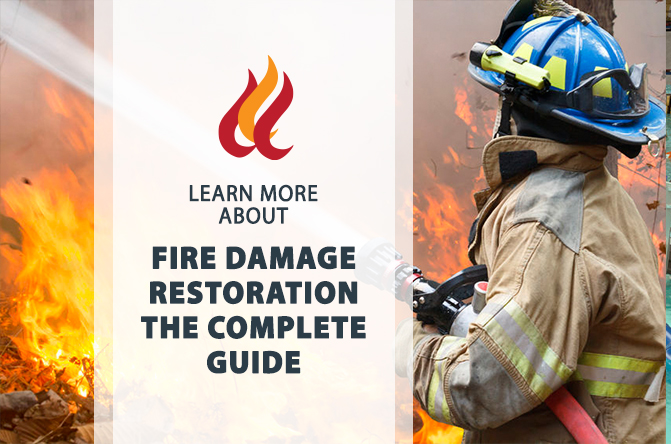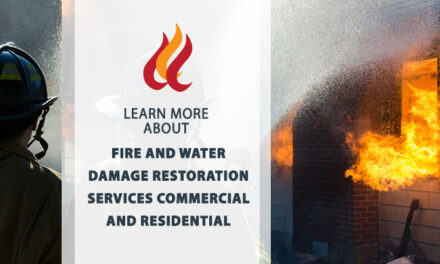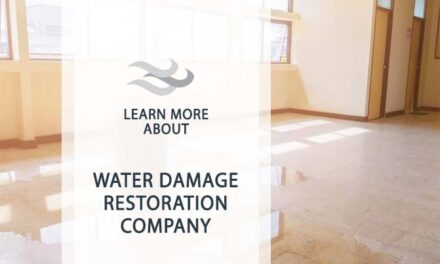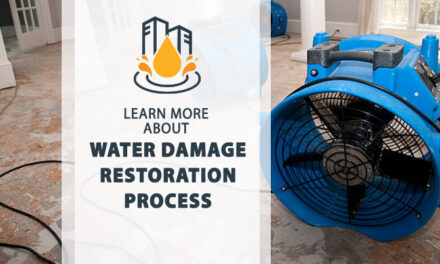Understand Your Insurance Coverage
The first thing you need to do after a fire is to contact your home insurance company and report the incident. Understanding your insurance coverage is crucial, and you should review your home insurance policy and fire insurance coverage to determine what’s covered and what’s not. Most standard insurance policies cover fire damage, but there may be exclusions or limitations, such as coverage for additional living expenses or water damage from burst pipes. Knowing what’s covered can help you set realistic expectations and avoid surprises later on.Choose a Reputable Fire Damage Restoration Company
Choosing the right fire damage restoration company is critical to the success of your restoration project. Look for a company that has experience working with insurance companies and can help you navigate the claims process. A reputable company should be licensed, insured, and certified by industry organizations such as the Institute of Inspection, Cleaning and Restoration Certification (IICRC). You can also check online reviews and ask for references from past clients to ensure you’re working with a reliable and trustworthy company.Get a Detailed Scope of Work
A scope of work is a detailed document that outlines the restoration process and the work that needs to be done. It should include a description of the damage, the restoration plan, and the estimated timeline and cost. It’s essential to get a written scope of work from your restoration contractor and review it carefully. Make sure you understand the scope of work and ask questions if anything is unclear. The scope of work should also include any necessary permits and inspections required by local authorities.Communicate Openly and Regularly
Communication is key to any successful restoration project, and it’s crucial to communicate openly and regularly with your restoration contractor. Make sure you have a designated point of contact who is available to answer your questions and provide updates on the progress of the project. You should also establish clear communication channels, such as phone or email, and agree on how often you’ll receive updates. Don’t be afraid to speak up if you have concerns or questions about the restoration process.Be Prepared for Unexpected Issues
Fire damage restoration projects can be unpredictable, and unexpected issues can arise. For example, hidden damage may be uncovered during the restoration process, or there may be delays due to weather or supply chain issues. It’s essential to be prepared for unexpected issues and work with your restoration contractor to find solutions. Your contractor should keep you informed of any issues and work with you to adjust the restoration plan as needed.Maintain Records and Documentation
Throughout the restoration process, it’s essential to maintain records and documentation, such as photographs, receipts, and invoices. These documents can help support your insurance claim and ensure you receive the compensation you’re entitled to. Make sure you keep all documents organized and easily accessible. Your insurance agent and restoration contractor can also help you gather the necessary documentation.Final Thoughts
Working with fire damage restoration contractors can be stressful, but following these tips and best practices can help the process go smoothly. Understanding your insurance coverage, choosing a reputable contractor, getting aTip #4: Understand Your Insurance Coverage
Before you begin working with a fire damage restoration contractor, it’s important to understand your insurance coverage. Review your home insurance policy and make note of what is covered in case of a fire, including replacement cost, additional living expenses, and personal property coverage. It’s also important to understand your liability coverage in case anyone is injured on your property during the restoration process.
If you have fire insurance coverage, make sure to review the policy carefully to understand what is covered and what is not. Some policies may require separate fire insurance or may have exclusions for certain types of damage. You should also check if your policy covers the cost of professional cleaning and restoration services.
If you have questions about your insurance coverage or need help filing a claim, reach out to your insurance agent or company. They can provide guidance and support throughout the process.
Tip #5: Communicate Clearly and Frequently
Effective communication is key when working with a fire damage restoration contractor. Make sure to establish clear communication channels from the beginning, and keep in touch frequently throughout the restoration process. This will help ensure that everyone is on the same page and that any issues or concerns can be addressed in a timely manner.
Be sure to communicate your expectations and any specific needs you may have, such as timelines, budget constraints, or preferences for materials or finishes. This can help the contractor tailor their services to meet your needs and provide the best possible outcome.
Throughout the process, be open and honest with the contractor about any concerns or issues that arise. This can help prevent misunderstandings and ensure that any problems are addressed promptly and effectively.
Tip #6: Choose a Reliable Contractor
When it comes to fire damage restoration, it’s essential to choose a reliable and experienced contractor. Look for a contractor who has experience working with insurance companies and can help you navigate the claims process. Make sure the contractor is licensed, insured, and certified by industry organizations such as the Institute of Inspection, Cleaning and Restoration Certification (IICRC).
Check references and read reviews from past clients to get a sense of the contractor’s reputation and quality of work. You can also ask for before-and-after photos or visit previous job sites to see the contractor’s work firsthand.
It’s important to choose a contractor who is professional, responsive, and easy to work with. A good contractor will prioritize communication, keep you informed throughout the process, and be willing to address any concerns or issues that arise.
Tip #7: Maintain Realistic Expectations
Finally, it’s important to maintain realistic expectations when working with a fire damage restoration contractor. While the goal is to restore your property to its pre-fire condition, the process may take time and may not be perfect.
Be prepared for some disruption to your daily routine, as the restoration process may require you to vacate your home temporarily or restrict access to certain areas. Understand that unexpected issues or delays may arise, and that the contractor will need to work within the constraints of your insurance coverage and budget.
However, by choosing a reliable contractor, maintaining open communication, and working together to establish clear goals and expectations, you can ensure that the fire damage restoration process is as smooth and stress-free as possible.
Conclusion
Working with a fire damage restoration contractor can be a daunting process, but by following these tips and
4. Maintain Communication with Your Insurance Company
Throughout the restoration process, it’s important to maintain open communication with your insurance company. Your insurance provider will likely send an adjuster to assess the damage and determine the coverage for restoration services. It’s essential to provide any necessary documentation and updates to your insurance company. This includes documenting any additional damages that may be discovered during the restoration process, such as hidden water damage or mold growth.
Additionally, be sure to review your policy and understand what types of losses are covered, including fire damage to your home, personal property, and any additional living expenses you may incur. Standard insurance policies typically cover losses resulting from fires, such as the cost to rebuild your home and replace damaged personal property. However, it’s important to confirm this with your insurance agent and review the terms of your policy.
5. Conclusion
Working with fire damage restoration contractors can be a daunting task, but with these tips and best practices, you can ensure a successful restoration process. Remember to do your research, ask questions, and maintain open communication with your contractor and insurance company throughout the process.
At Del Mar Builders, we understand the challenges of restoring your home after a fire. We are committed to providing top-quality restoration services and helping our clients navigate the claims process with their insurance companies. Contact us at 800.298.0900 to learn more about our fire damage restoration services.
6. Keywords
home insurance policy, fire insurance coverage, standard insurance policy, standard homeowners insurance coverages, homeowners insurance policies, home insurance companies, home insurance company, standard home insurance, insurance agent, water damage, replacement cost, additional living expenses, include fire, burst pipes, washing machines, cover the cost, homeowners insurance cover fire, insurance companies, covers losses, live in an area, damaged by fire, insurance coverages, local agents, separate fire insurance, rebuild your home, personal property, additional coverage, insurance typically, liability coverage, work with fire damage restoration contractors, tips and best practices.




